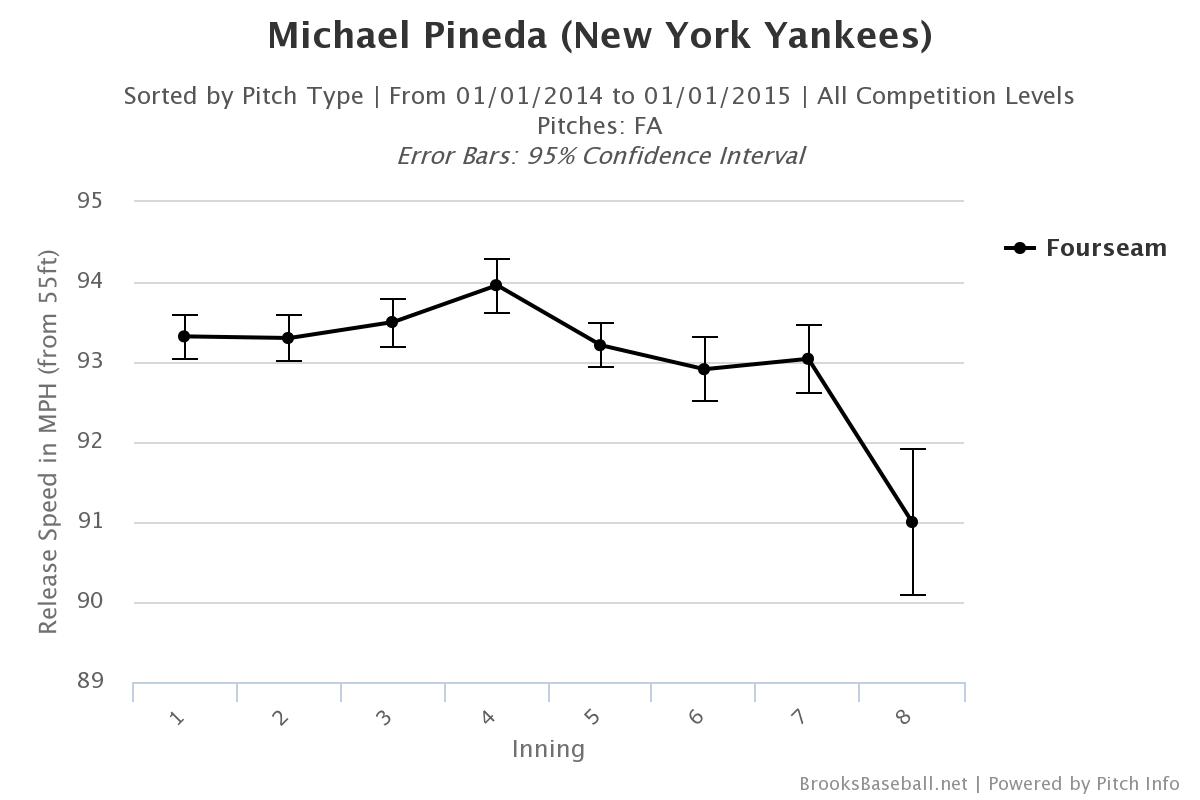
CC Sabathia did pretty much everything that you’d expect from a frontline starting pitcher in his season debut last Thursday against Toronto. He struck out a third of the batters he faced, walked nobody, didn’t allow a homer, and induced ground balls or popups on nearly every ball that was put into play. Sabathia also got batters to chase almost half of the pitches he threw out of the zone, and the Blue Jays whiffed on nearly 15 percent of the pitches he threw. Sounds like an ace!
In fact, if you look at the outcomes that a pitcher has control over, Sabathia produced one of the best games of his 16-season career. His FIP (Fielding-Independent Pitching) for the game was 0.18, the second-best mark out of the 424 games he’s pitched with the Indians, Brewers and Yankees.
Despite those impressive results, he ultimately ended up with a crooked pitching line (5 R, 8 H, 5 2/3 IP) because of two issues that have plagued him over the last two seasons – a high BABIP and inability to pitch out of trouble. Half of the 16 balls put into play went for hits, and he stranded just three of the players that reached base against him. There is little doubt that Sabathia stills needs to iron out those problems if he’s going to bounce back from the worst two-year stretch of his career.
However, there was one very encouraging trend from his season debut that is worth watching for tonight when the large lefty takes the mound against the Orioles in his second start of 2015.
Even during the low points of Sabathia’s struggles in 2013-14, he still maintained strong strikeout and walk rates. So the fact that he had eight strikeouts and no walks last Thursday was not surprising.
Rather, the most impressive number from his outing against the Blue Jays was 75.0 – the percentage of balls in play that were grounders. That was the third-highest groundball rate he’s induced in any game of his career, and his best mark since joining the Yankees. As you can see in the heat map below, he was really effective in pounding the bottom of the strike zone with his sinker.
Perhaps realizing that he can no longer dominate hitters with a blazing four-seamer, Sabathia relied on his two-seam fastball more than ever before against the Blue Jays. Forty-five percent of the pitches he threw were sinkers, his highest two-seam usage rate in a game since Pitch F/X tracking began in 2007. He also threw just six four-seamers, his fewest in any game over that same time period.
Although the sinker averaged only 89 mph, it had impressive horizontal movement (11 inches) and he located it well (53 percent below the knees). The pitch was just not a ground ball machine either; he got three strikeouts with the sinking fastball and batters whiffed on more than 20 percent of their swings against it.
One key result of his increased sinker usage was the weak contact that he induced throughout his outing. According to ESPN Stats & Information’s Mark Simon, he gave up only one hard-hit ball (as classified by video review) to the 24 batters he faced last Thursday. Just two of the 16 balls in play were line drives, and in addition to his 12 ground balls, Sabathia also generated an infield popup.
By keeping the ball down and getting grounders, Sabathia successfully avoided one of his biggest problems over the past two seasons – the home run ball. From 2013-14, he allowed 1.33 homers per nine innings, the sixth-highest rate among pitchers with at least 250 innings in that span.
Was this a deliberate strategy by Sabathia? Will he continue to ditch his four-seam fastball and instead go to his sinker to generate quick outs? Perhaps the most intriguing question is this one: Can Sabathia re-invent himself as a ground ball pitcher as he ages and enters the twilight of his career? If the answer is yes, the Yankees may have found themselves a solid mid-rotation pitcher for the next few years.




